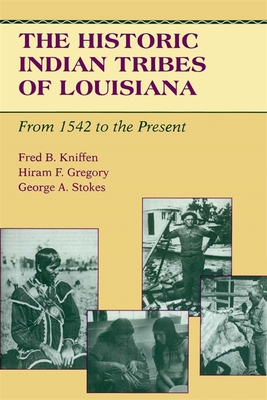
Kniffen, Fred B.
Although many specialized studies have been written about Louisiana's Indian tribes, no complete account has appeared regarding their long, varied history. The Historic Indian Tribes of Louisiana: From 1542 to the Present is a highly informative study that reconstructs the history and cultural evolution of these people. This study identifies tribal groups, charts their migrations within the state, and discusses their languages and customs. According to the authors, the first descriptions of Louisiana Indians are contained in accounts kept by members of Hernando de Soto's expedition In the 1540s. The next recorders of Indian life were the French in the 1700s. European influences irrevocably marked the Indians' lives. The natives lost tribal lands to the new settlers and replaced many of their weapons and tools with those of the Europeans. Diseases apparently introduced by the Spaniards decimated entire tribes and caused the disappearance of certain tribal languages that had never been recorded. However, much of Indian material culture has survived even to the present, including the dugout canoe, or pirogue, and the beautiful cane basketry of the Chitimacha tribe.According to the authors, current figures show that Louisiana has the third largest native American population in the eastern United States. Several of Louisiana's present-day Indian tribes, such as the Tunica-Biloxi, Choctaw, and Koasati, entered the state in the second half of the eighteenth century. They gradually established settlements throughout the state, at times displacing the native tribes. Today, many of Louisiana's Indians work in business and industry and as farmers and loggers.The Historic Indian Tribes of Louisiana is a valuable contribution to the literature on Louisiana History. It will be of interest to anthropologists, geographers, historians, and anyone wanting to know more about these important members of Louisiana's population.







